Abstract
OBJECTIVE: Infection with Cryptosporidium parvum generally causes a self-limiting diarrheal illness. Symptoms can, however, last for weeks and can be severe, especially in immunocompromised individuals. In 1994, the Council of State and Territorial Epidemiologists (CSTE) recommended that cryptosporidiosis be a nationally notifiable disease. Forty-seven states have made infection with C. parvum notifiable to the Centers for Disease Control and Prevention (CDC), and laboratories in the three remaining states report cases to state health departments, which may report them to the CDC. To see what the data show about patterns of infection, the authors reviewed the first four years of reports to the CDC. METHODS: The authors analyzed reports of laboratory-confirmed cases of cryptosporidiosis for 1995-1998. RESULTS: During 1995-1998, 11,612 laboratory-confirmed cases of cryptosporidiosis were reported to the CDC. All ages and both sexes were affected. An increase in case reporting was observed in late summer during each year of surveillance for people <20 years of age. CONCLUSION: The first national data on laboratory-confirmed cryptosporidiosis cases, although incomplete, provide useful information on the burden of disease in the nation as well as provide baseline data for monitoring of future trends.
Full text
PDF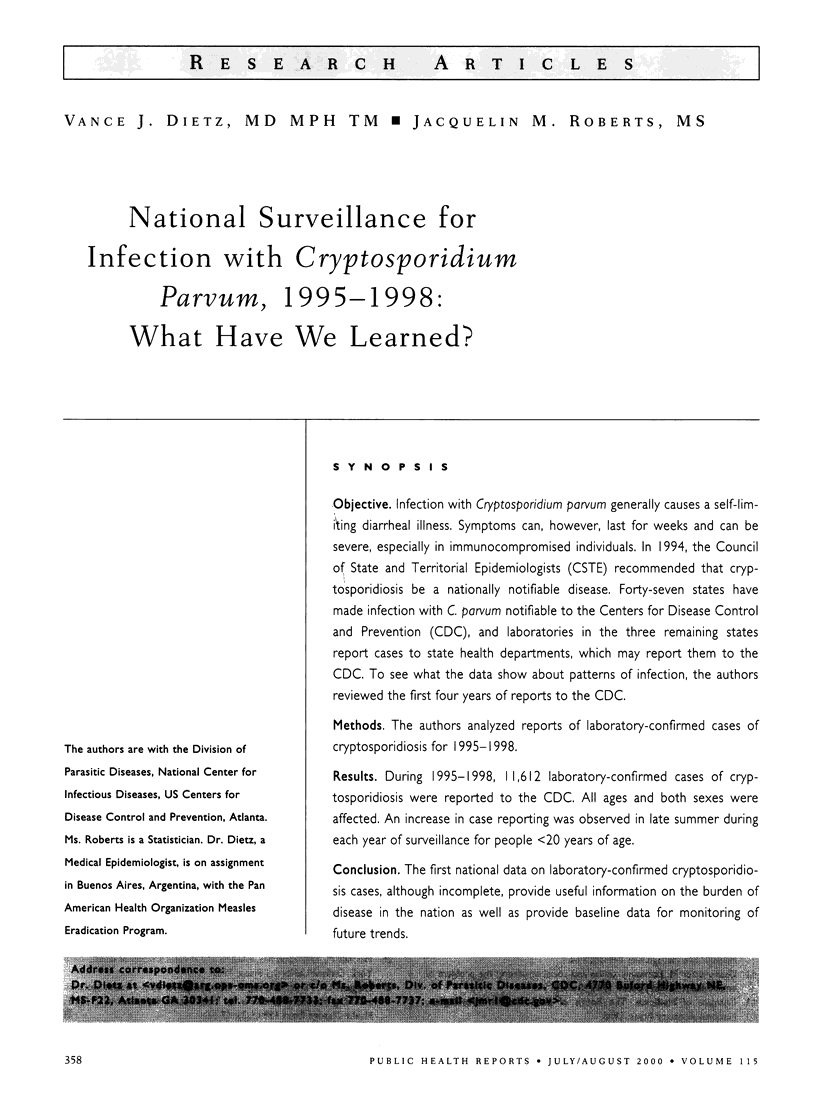
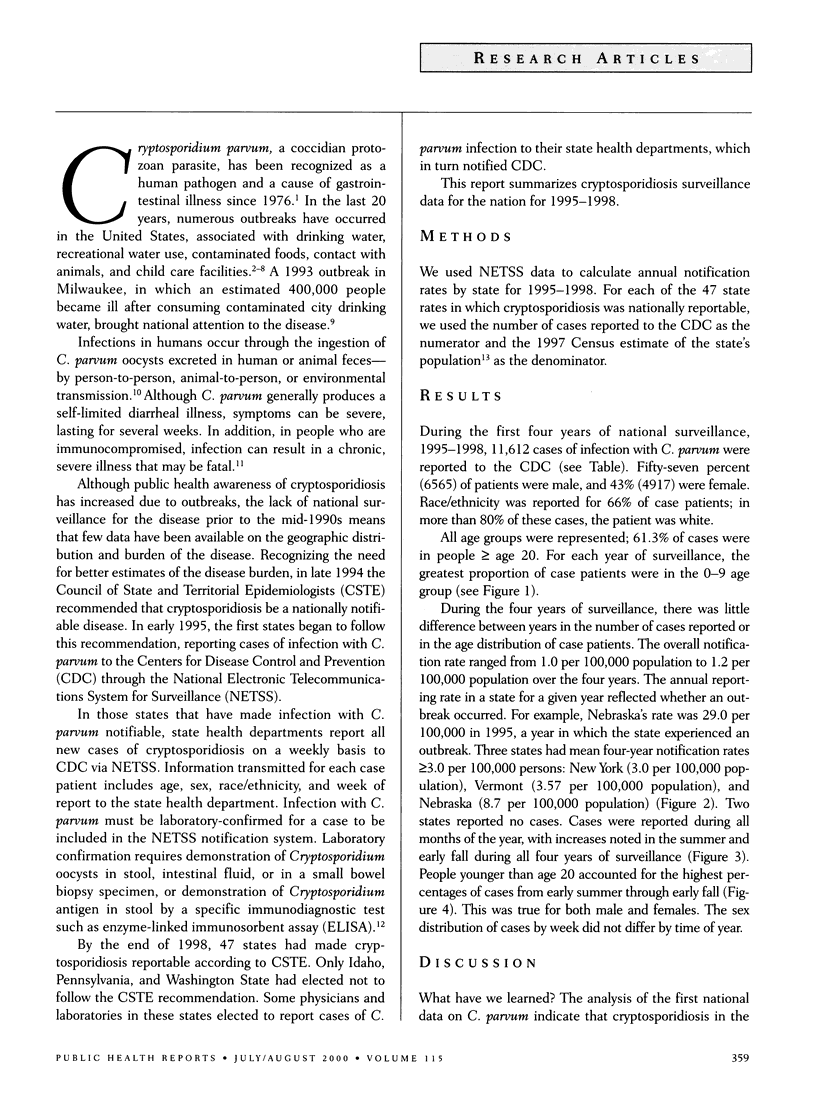
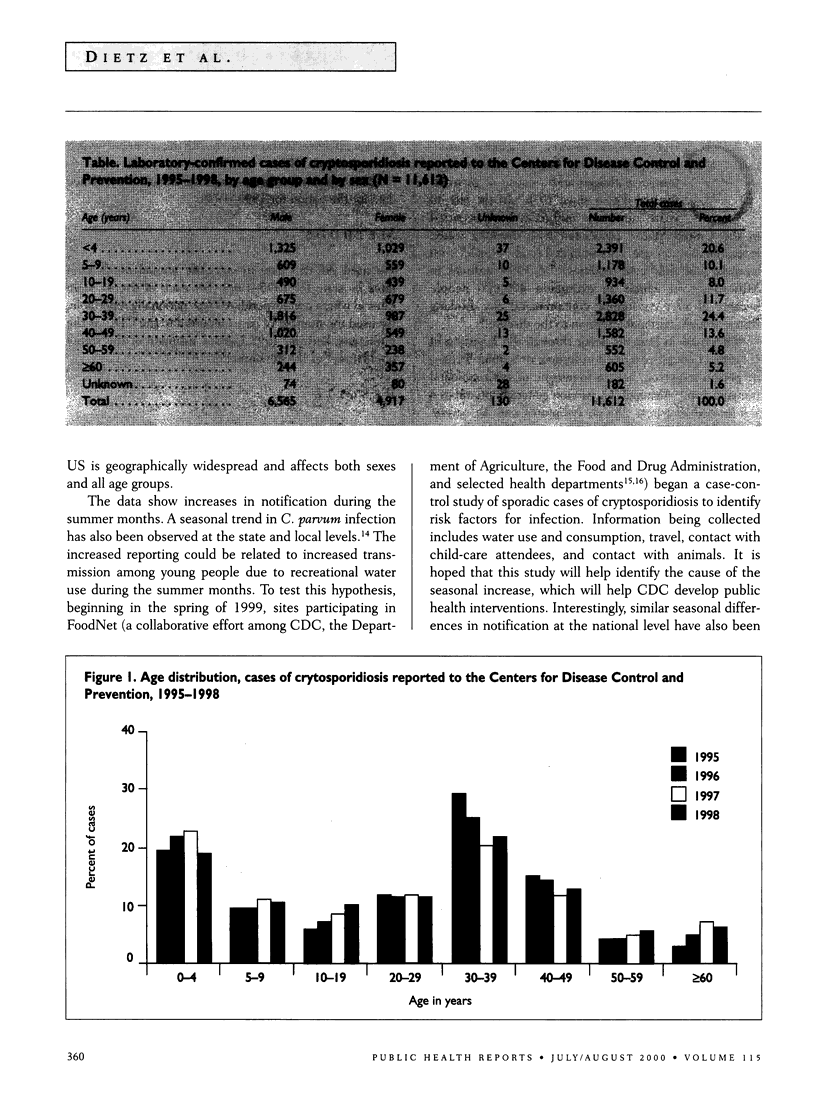
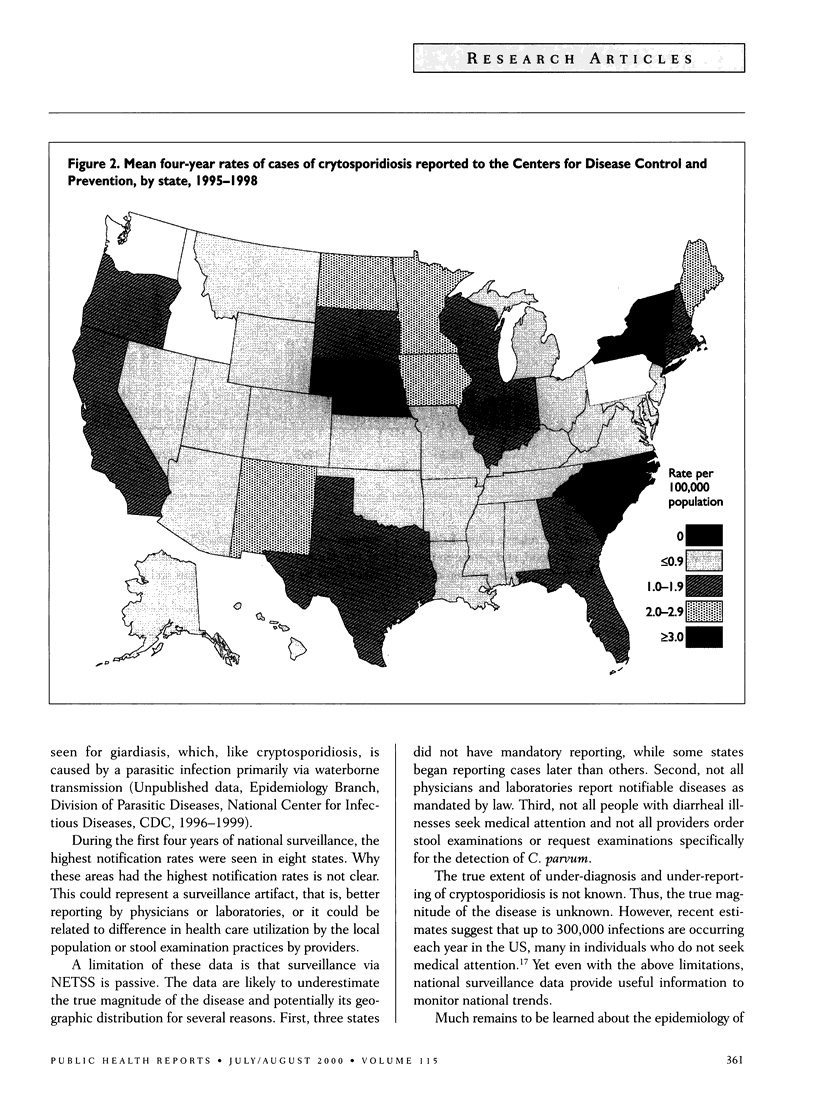
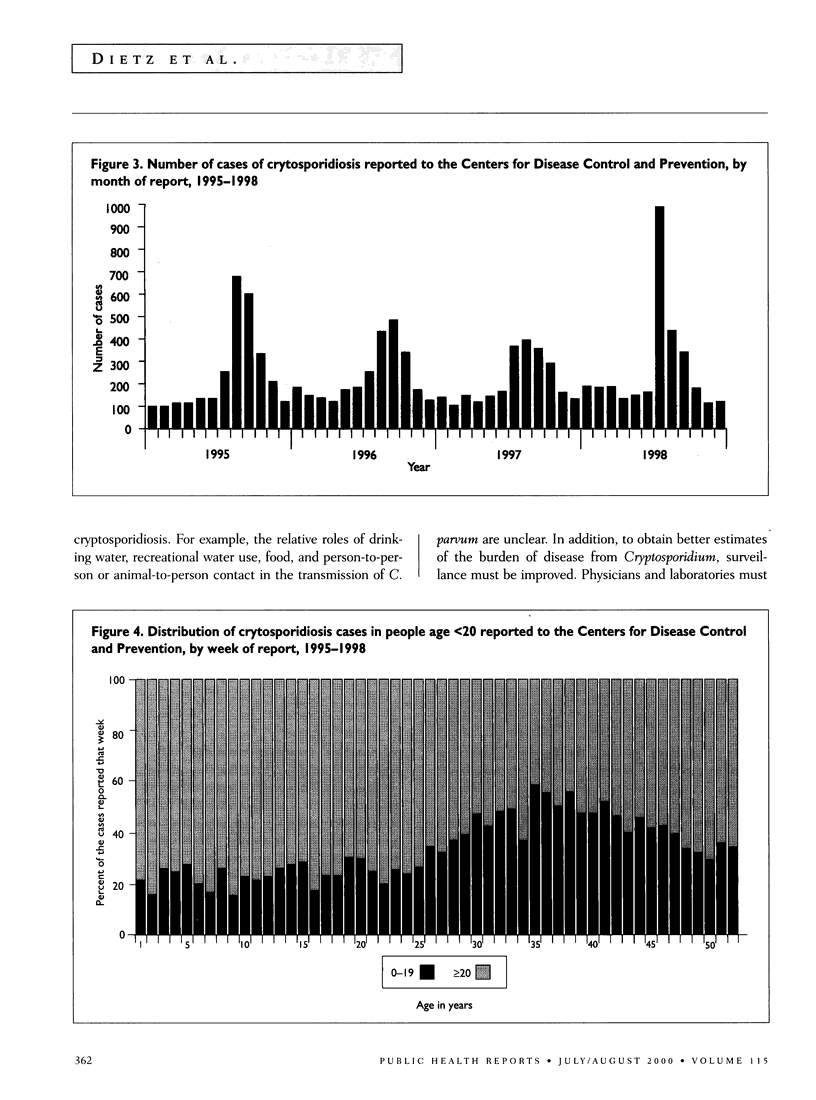
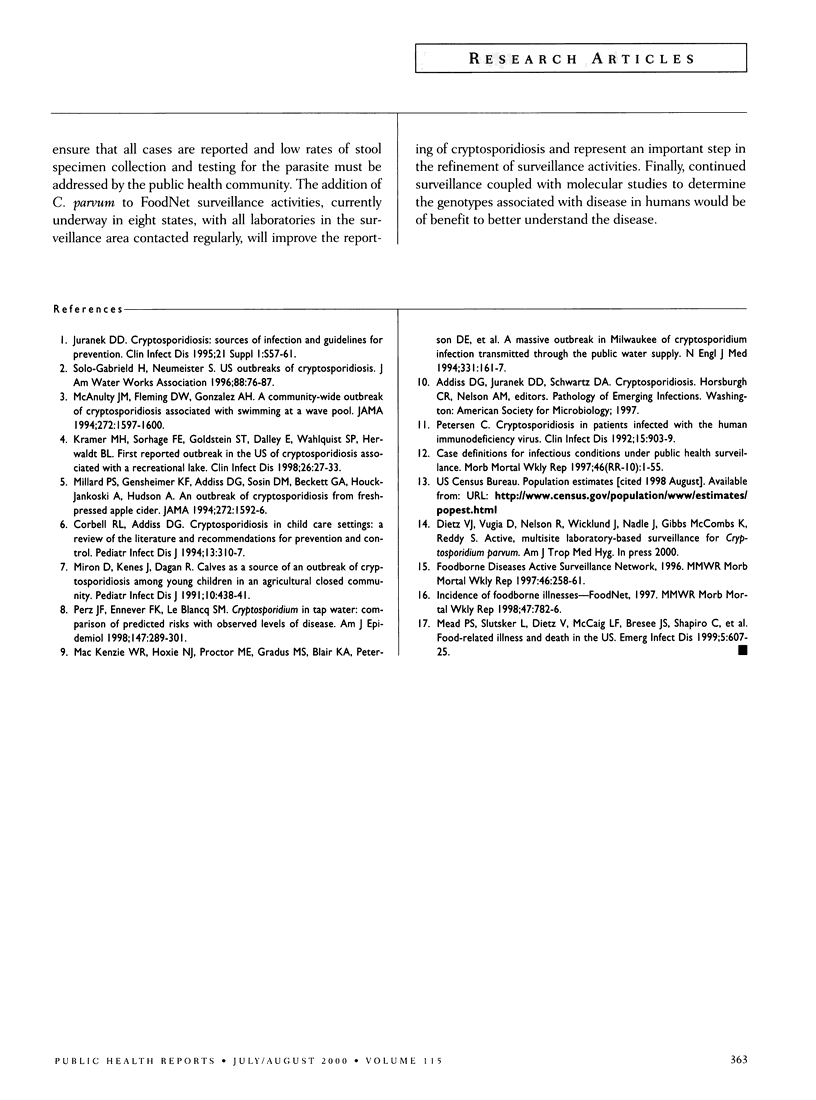
Selected References
These references are in PubMed. This may not be the complete list of references from this article.
- Cordell R. L., Addiss D. G. Cryptosporidiosis in child care settings: a review of the literature and recommendations for prevention and control. Pediatr Infect Dis J. 1994 Apr;13(4):310–317. [PubMed] [Google Scholar]
- Kramer M. H., Sorhage F. E., Goldstein S. T., Dalley E., Wahlquist S. P., Herwaldt B. L. First reported outbreak in the United States of cryptosporidiosis associated with a recreational lake. Clin Infect Dis. 1998 Jan;26(1):27–33. doi: 10.1086/516271. [DOI] [PubMed] [Google Scholar]
- Mac Kenzie W. R., Hoxie N. J., Proctor M. E., Gradus M. S., Blair K. A., Peterson D. E., Kazmierczak J. J., Addiss D. G., Fox K. R., Rose J. B. A massive outbreak in Milwaukee of cryptosporidium infection transmitted through the public water supply. N Engl J Med. 1994 Jul 21;331(3):161–167. doi: 10.1056/NEJM199407213310304. [DOI] [PubMed] [Google Scholar]
- Mead P. S., Slutsker L., Dietz V., McCaig L. F., Bresee J. S., Shapiro C., Griffin P. M., Tauxe R. V. Food-related illness and death in the United States. Emerg Infect Dis. 1999 Sep-Oct;5(5):607–625. doi: 10.3201/eid0505.990502. [DOI] [PMC free article] [PubMed] [Google Scholar]
- Millard P. S., Gensheimer K. F., Addiss D. G., Sosin D. M., Beckett G. A., Houck-Jankoski A., Hudson A. An outbreak of cryptosporidiosis from fresh-pressed apple cider. JAMA. 1994 Nov 23;272(20):1592–1596. [PubMed] [Google Scholar]
- Miron D., Kenes J., Dagan R. Calves as a source of an outbreak of cryptosporidiosis among young children in an agricultural closed community. Pediatr Infect Dis J. 1991 Jun;10(6):438–441. doi: 10.1097/00006454-199106000-00004. [DOI] [PubMed] [Google Scholar]
- Perz J. F., Ennever F. K., Le Blancq S. M. Cryptosporidium in tap water: comparison of predicted risks with observed levels of disease. Am J Epidemiol. 1998 Feb 1;147(3):289–301. doi: 10.1093/oxfordjournals.aje.a009449. [DOI] [PubMed] [Google Scholar]
- Petersen C. Cryptosporidiosis in patients infected with the human immunodeficiency virus. Clin Infect Dis. 1992 Dec;15(6):903–909. doi: 10.1093/clind/15.6.903. [DOI] [PubMed] [Google Scholar]


